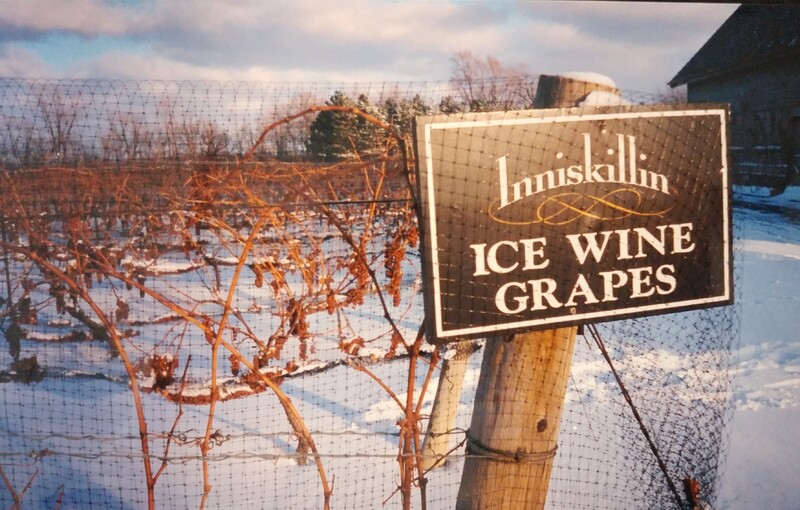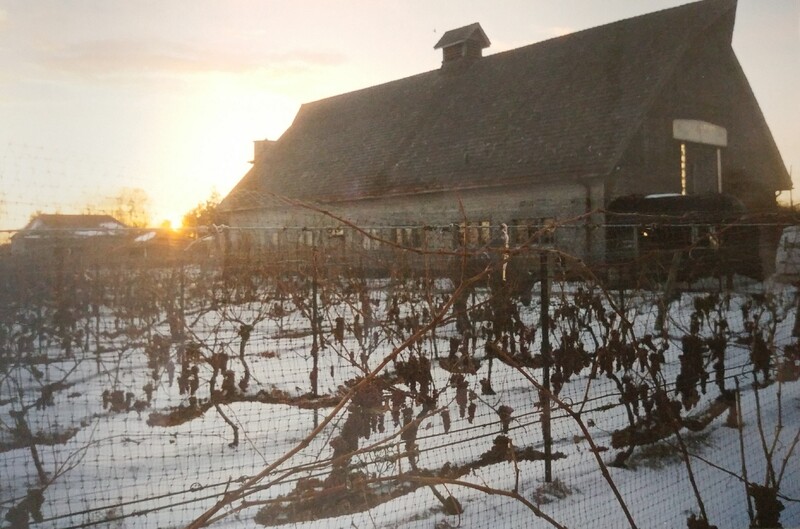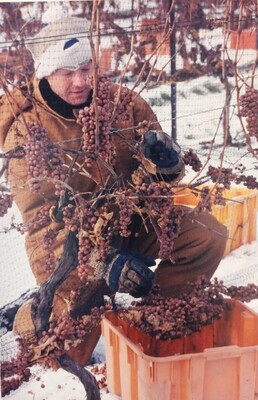Icewine
Icewine was originally developed in the cool climate wine regions in Europe, most notably Germany and Austria. The Niagara climate is similar to that of these regions and provides optimal conditions for icewine production. Icewine grapes remain on the vine until December and January. The grapes become dehydrated from repeated freezing and thawing during the winter. This results in a concentration of the sugars, acids, and extracts in the berries. The intensity of these components is responsible for giving icewine its distinctive and complex flavour.
In 1983, Inniskillin planted its first batch of icewine grapes. Unfortunately, birds proceeded to eat the grapes over the winter. The following year another batch of icewine grapes was planted, this time with protective netting over the vines to protect the grapes from the birds. Kaiser successfully harvested this batch of Vidal grapes in 1984.
The process of harvesting the berries is tedious and the yield is small. The grapes are usually picked by hand when they are naturally frozen, preferably at a temperature of -10 to -13 degrees Celsius. This sometimes requires that the grapes be harvested in the middle of the night when temperatures are at their lowest. It is important to pick the grapes at the appropriate temperature because this has a significant impact on the quality of the wine. Although harvesting is traditionally done by hand, it is becoming increasingly common for mechanical harvesters to be used. Grapes harvested by machine are cleaner and have less debris than those harvested by hand. This results in a cleaner juice with lower levels of insoluble particles.
It is not uncommon for the grapes to yield only 5 to 10 percent of a normal harvest. Once harvested, the grapes are pressed in the extreme cold. The pressing releases a small amount of sweet, concentrated juice, while much of the water remains frozen as ice crystals. If the grapes warm during the pressing, the juice will be diluted and affect the quality of the wine. Once pressed, the juice is fermented for several months and stops naturally at around 10-12 percent alcohol. Good icewines can be consumed shortly after bottling or aged for more than 20 years. The wine changes very slowly during aging.
Most Niagara winters provide the necessary weather conditions for the production of icewine. However, sometimes milder weather conditions occur that result in an inability to harvest the icewine grapes until February or March. Milder weather can also reduce the yield as the grapes dehydrate, shrivel, and fall to the ground before they can be harvested. Ideally, icewine harvests occur between the middle of December and the first half of January.



